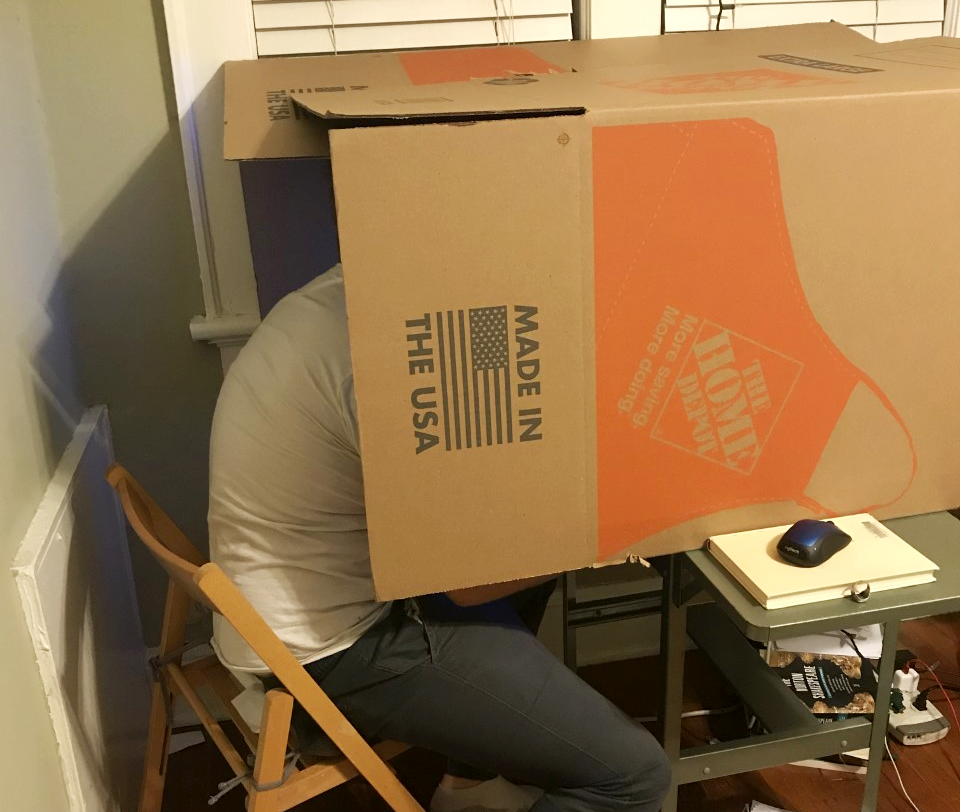This reflection post is part of a series by staff members of the Emory Center for Digital Scholarship (ECDS) who have taught remotely during the COVID-19 pandemic. Joe Fritsch is a Digital Scholarship Technical Lead at ECDS and a PhD Candidate in English.
by Joe Fritsch
 Whatever the setting, whatever the discipline, teachers in all their forms respond to uncertainty. Uncertainties arise within our scholarship in the guise of differing opinions and perennially unanswerable questions. Students come to us with their uncertainties—the hows and the whys. Hopefully, some combination of our training and our commitment to education blazes a trail through such wildernesses. Last spring, I was reminded that uncertainty is at the heart of education when both my classes—“Shakespeare’s Words; Shakespeare’s Worlds” and “Intro. to 3D Visualization”—were moved online in response to the COVID pandemic.
Whatever the setting, whatever the discipline, teachers in all their forms respond to uncertainty. Uncertainties arise within our scholarship in the guise of differing opinions and perennially unanswerable questions. Students come to us with their uncertainties—the hows and the whys. Hopefully, some combination of our training and our commitment to education blazes a trail through such wildernesses. Last spring, I was reminded that uncertainty is at the heart of education when both my classes—“Shakespeare’s Words; Shakespeare’s Worlds” and “Intro. to 3D Visualization”—were moved online in response to the COVID pandemic.
A classroom does work. At its best, it provides a shared context and represents an investment by students and teachers in both the course content and in the thoughts and ideas of one another. Deprived of a classroom and with my students telling me about new challenges impeding their academic success, I quickly realized that my instructional methods needed to change, but into what, I did not know.
Ultimately, my teaching strategy for each class differed. For my Shakespeare class, I devoted my time to recording (and re-recording) and editing lecture videos. When these video files proved too large for most video hosting sites, I transitioned to audio, podcast-esque lectures. My desk is metal and I live in a bustling neighborhood in Atlanta, so I had to devise some less-than-cutting-edge audio recording techniques (see Figure 1). I eased course expectations, students used Canvas discussion sections for conversation, and I held open Zoom office hours. When students did stop by my virtual office, it was the highlight of my week. One thing that surprised me was when my weekly preparation time for the course doubled. Scripting and recording 30-45 minute audio lectures made my weekends disappear entirely and responding to emails became a daily necessity.

As my colleagues Arya Basu and Ian Burr discussed in their posts, “Intro. to 3D Visualization” was a technologically demanding course. Modelling and coding are very hands-on practices that require trial and error. If something breaks in a 3D scene (and it always does), the problem may be simple or it may require a significant workaround. When in the classroom, I can assess a malfunctioning scene fairly quickly while demonstrating my process to a student. As an added benefit, nearby students may overhear something useful. Online, delays and communication issues compound. During this time, I was deeply grateful for the companionship Arya and Ian provided me. We put our heads together in meetings and phone calls to think through solutions to our problems and we worked with our students to help them create spectacular final projects. Uncertainty, I’m certain, is much easier to manage with friends.
Each night, my inbox filled with student questions, university updates, teaching resources, articles on pedagogy, think pieces, and casual suggestions. Each morning, I sat with as much new information as I could absorb, uncertain of what to do. I think that the lesson Shakespeare teaches me again and again is that as a species we are miserable judges of reality. Shakespeare, ever “certain o’er incertainty,” delights in dramatizing the many ways that our senses and our wits can be fooled. Arya, Ian, and I often marvel at the fact that with nothing more than a few thousand vertices and some well-made textures, a shrewd designer can create a 3D visualization that looks just like real life. What the spring semester of 2020 confirmed for me was that the reward for pursuing knowledge is not the cold comfort of a momentary certainty but the ongoing courage to remain uncertain.
This is the third post in a three-part series on teaching the 3D Visualization and Interactive Media Design course; check out the previous reflections by Arya Basu and Ian Burr (click on their names for the blog posts).
